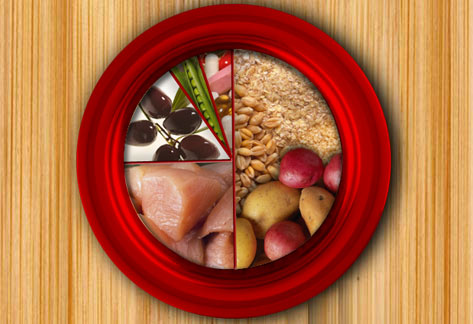Share This
According to the 2011-2012 APPA National Pet Owners Survey, 62% of U.S. households own a pet, which equates to 72.9 million homes. To many pet owners, the dog, cat and rabbit are members of the family. And as members of the family, our pets get carefully selected toys, beds, (in some cases!) clothes, and of course food.
Any animal lover will tell you that their pet’s nutrition is a priority – a healthy pet is a happy pet. Animals, just like humans, are healthiest when they eat nutritious foods. To that end, many pet owners prepare daily meals and special treats for their beloved creatures, while others might drive long distances to shop for the best pet foods. But the question I had was, “Are whole grains are as important for animals’ diets as they are for humans?”
Veterinarians join nutrition experts in saying pets can reduce several health risks when their diet includes whole grains. The very same health benefits can be seen in our beloved pets with consumption of whole grains as part of a healthy diet – such as reduced risks of kidney disease, diabetes, high cholesterol and some cancers.
DOGS
I know I am not alone when I ponder what my dog is eating. To learn more about nutrition for dogs, I went online to find answers. Low and behold, I found the dog version of USDA’s MyPlate, called My Bowl for Dogs. The bowl, developed by PetMD in partnership with Hill’s Pet Nutrition, shows dog owners how to properly balance their pet’s diet for optimum health. In the carbohydrates section of the bowl, pet owners are reminded that “whole grains are the best source of insoluble fiber and keep blood sugar levels steady longer. Look for the words ‘whole grain’ in the ingredient list.” While some grains are refined and used as filler, whole grains are what you should be feeding your dog.
HORSES
Registered dietitian Barbara Quinn recently shared her story of multigrain whole grain organic hay for her horses. They just loved the bundle of hay delivered by her grain-farming neighbor, a mix of greens and alfalfa blended with oats, wheat and barley. Seeing how much they liked it inspired her to write of the importance of roughage and for combining a variety of grains for maximum benefit.
CHICKENS
Again, browsing through my Google alerts, I stumbled across a blog from a farmer in Ohio who grows whole wheat for her chickens. She cuts the stalks and drops the pile of wheat in the hen yard. The hens remove the grain kernel from the husk, which keeps them busy, but more importantly, well fed. The result: very happy hens!
To be sure your animal friend is getting the maximum nutritional value, choose whole grains, such as whole wheat, rye, oats, barley and brown rice, for their food. You might even be lucky enough to find some pet foods with quinoa, but I’ll let Mallory our resident quinoa expert find it and when she does, you’ll be the first to know. (Karen)


Comments
Add a Comment